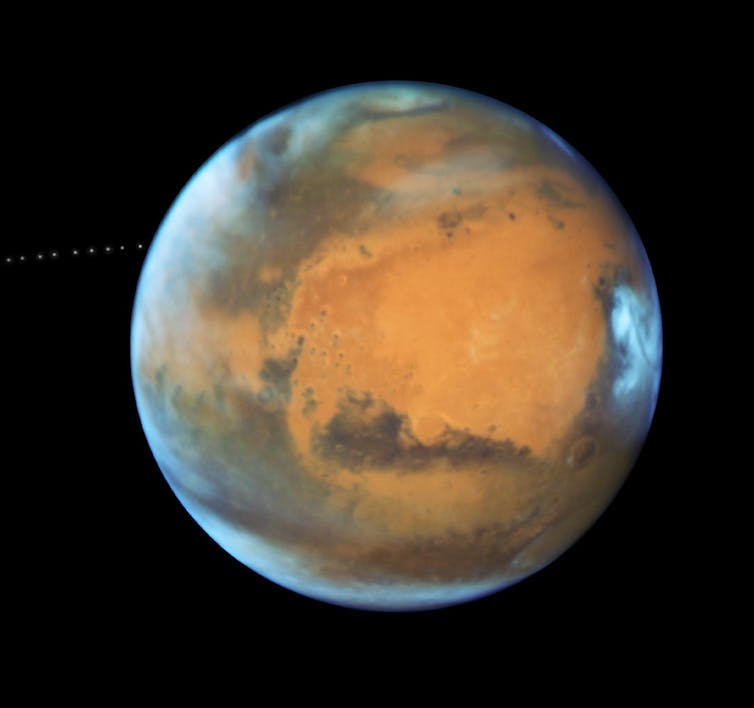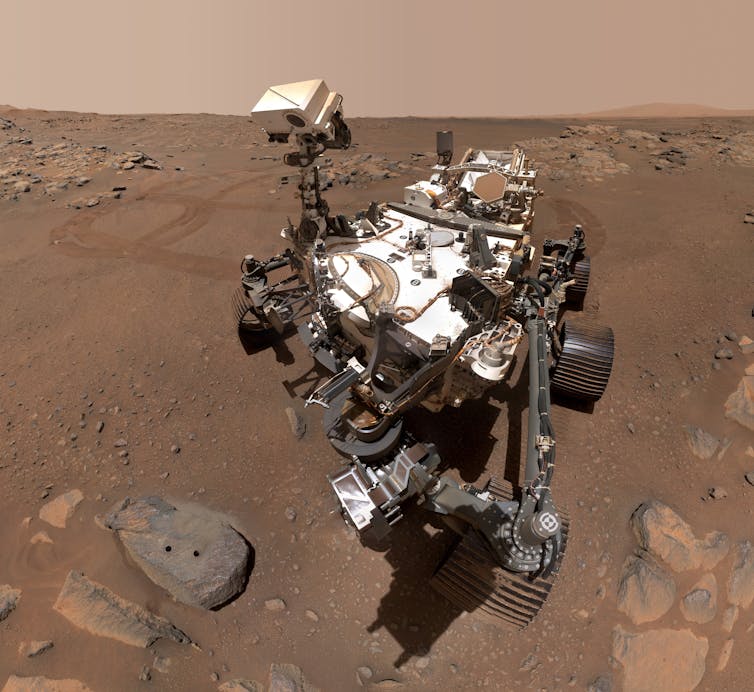Is or was there life on Mars? That profound question is so complex that it will not be fully answered by the two NASA rovers now exploring it.
But because of the literal groundwork the rovers are performing, scientists are finally investigating, in-depth and in unprecedented detail, the planet’s evidence for life, known as its “biosignatures.” This search is remarkably complicated, and in the case of Mars, it is spanning decades.
As a geologist, I have had the extraordinary opportunity to work on both the Curiosity and Perseverance rover missions. Yet as much as scientists are learning from them, it will take another robotic mission to figure out if Mars has ever hosted life. That mission will bring Martian rocks back to Earth for analysis. Then – hopefully – we will have an answer.

A photograph of Mars, the fourth planet from the Sun, taken by the Hubble Space Telescope in 2017.
NASA
From habitable to uninhabitable
While so much remains mysterious about Mars, there is one thing I am confident about. Amid the thousands of pictures both rovers are taking, I’m quite sure no alien bears or meerkats will show up in any of them. Most scientists doubt the surface of Mars, or its near-surface, could currently sustain even single-celled organisms, much less complex forms of life.
Instead, the rovers are acting as extraterrestrial detectives, hunting for clues that life may have existed eons ago. That includes evidence of long-gone liquid surface water, life-sustaining minerals and organic molecules. To find this evidence, Curiosity and Perseverance are treading very different paths on Mars, more than 2,000 miles (3,200 kilometers) from each other.
These two rovers will help scientists answer some big questions: Did life ever exist on Mars? Could it exist today, perhaps deep under the surface? And would it be only microbial life, or is there any possibility it might be more complex?
The Mars of today is nothing like the Mars of several billion years ago. In its infancy, Mars was far more Earth-like, with a thicker atmosphere, rivers, lakes, maybe even oceans of water, and the essential elements needed for life. But this period was cut short when Mars lost its magnetic field and nearly all of its atmosphere – now only 1% as dense as the Earth’s.
The change from habitable to uninhabitable took time, perhaps hundreds of millions of years; if life ever existed on Mars, it likely died out a few billion years ago. Gradually, Mars became the cold and dry desert that it is today, with a landscape comparable to the dry valleys of Antarctica, without glaciers and plant or animal life. The average Martian temperature is minus 80 degrees Fahrenheit (minus 62 degrees Celsius), and its meager atmosphere is nearly all carbon dioxide.




